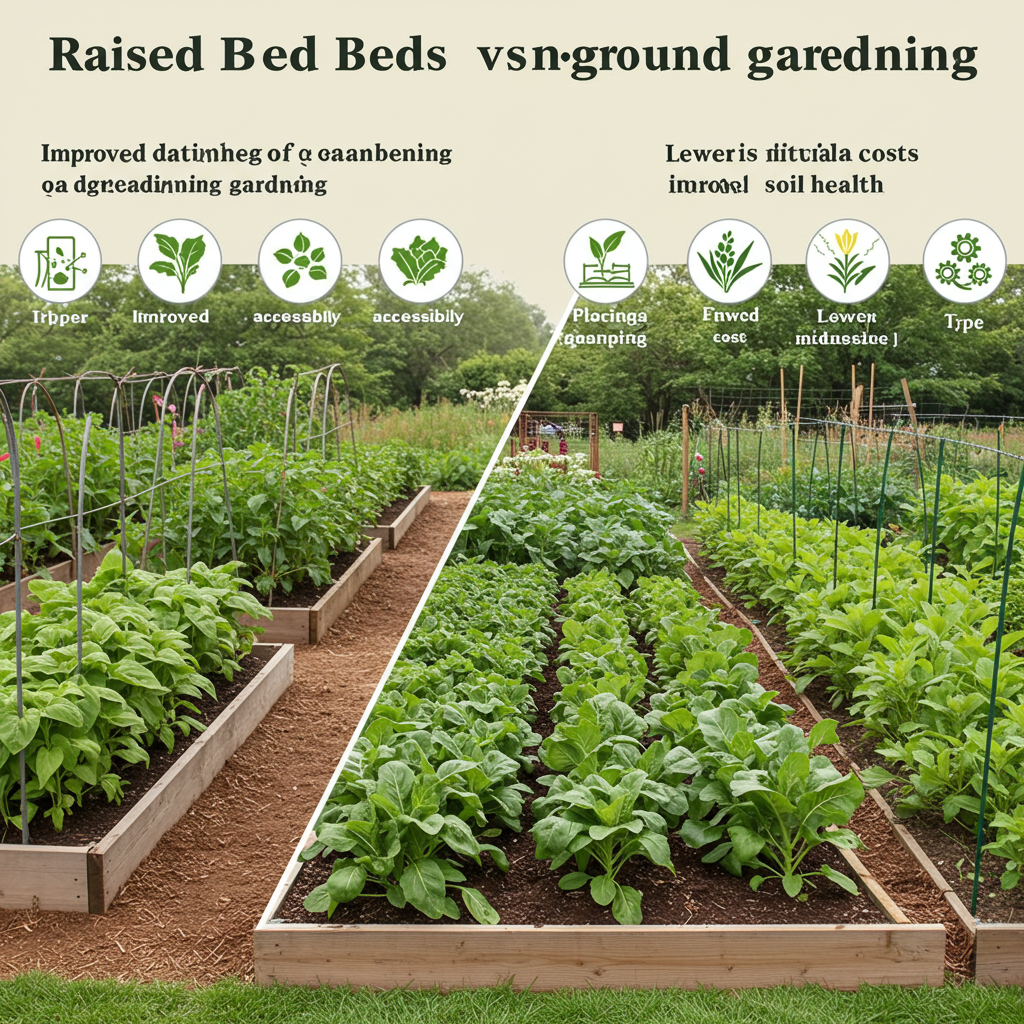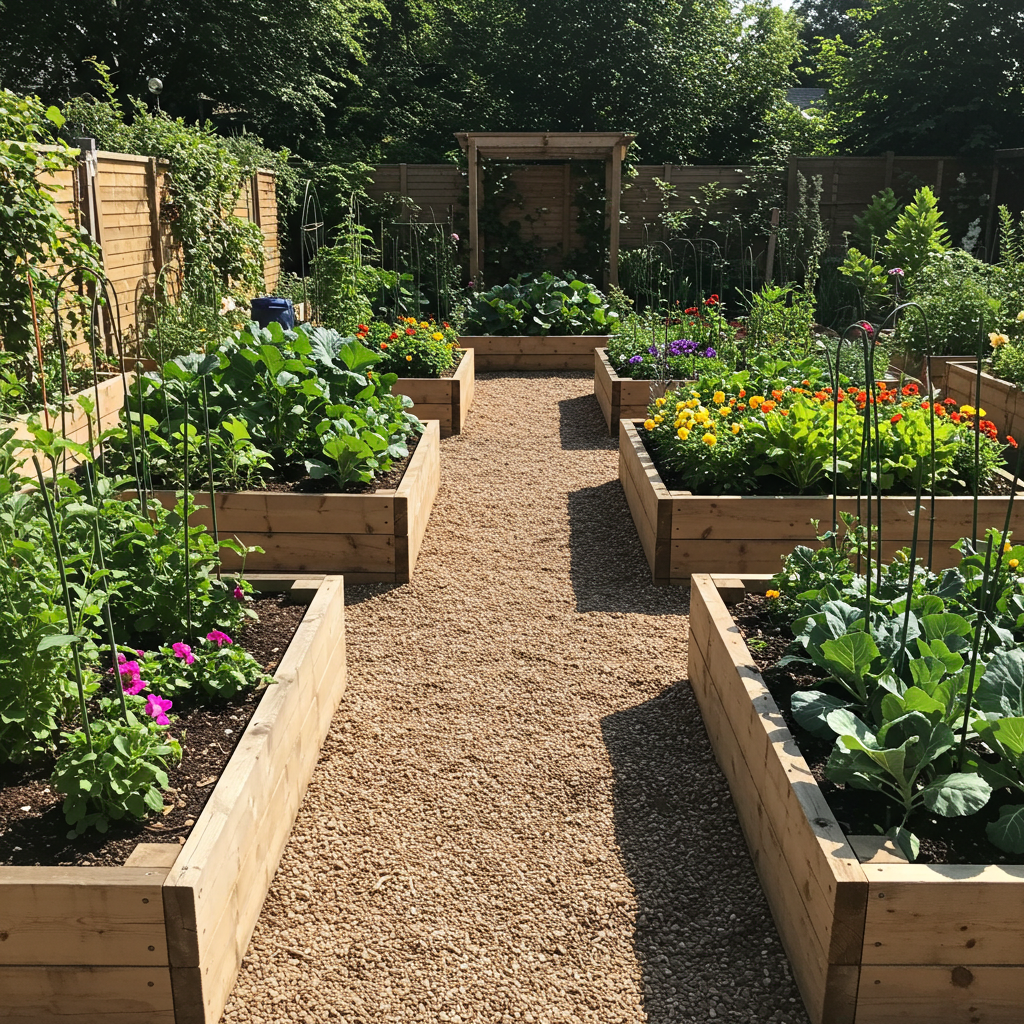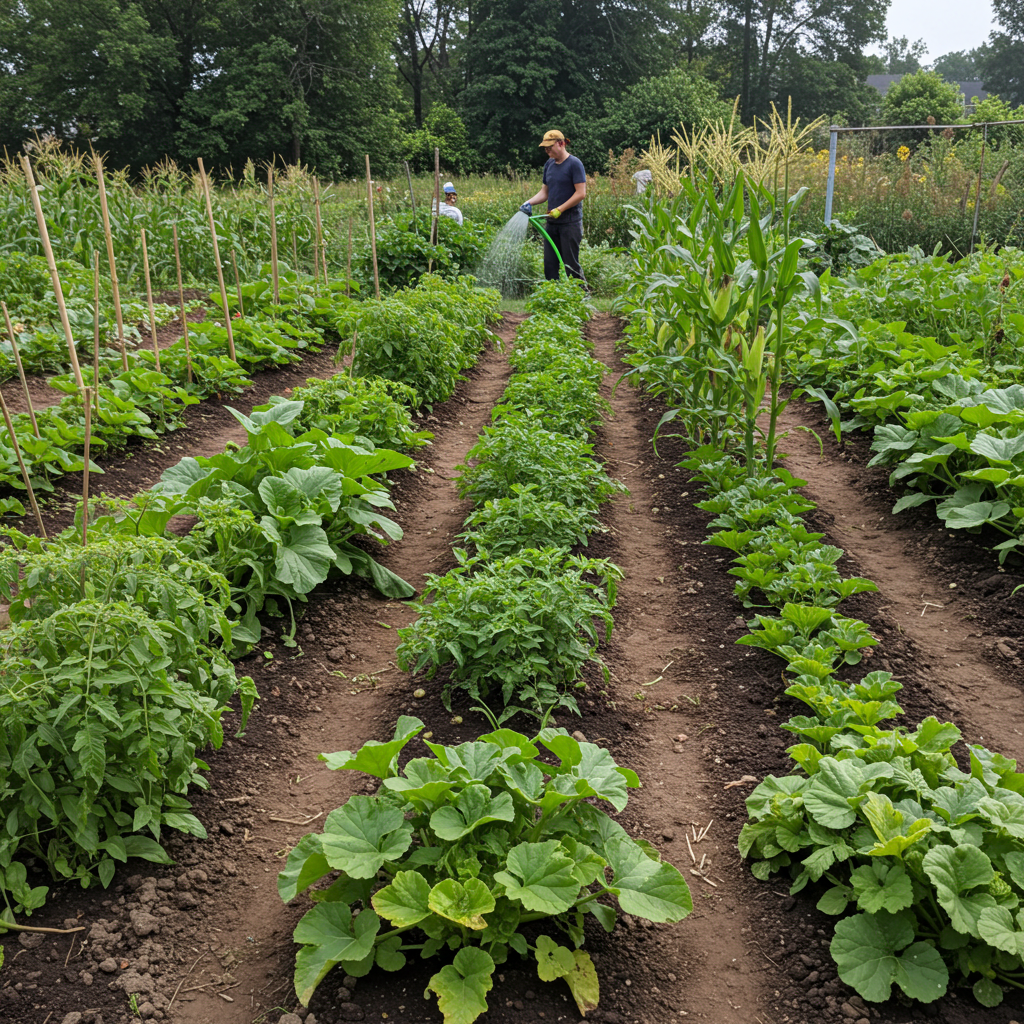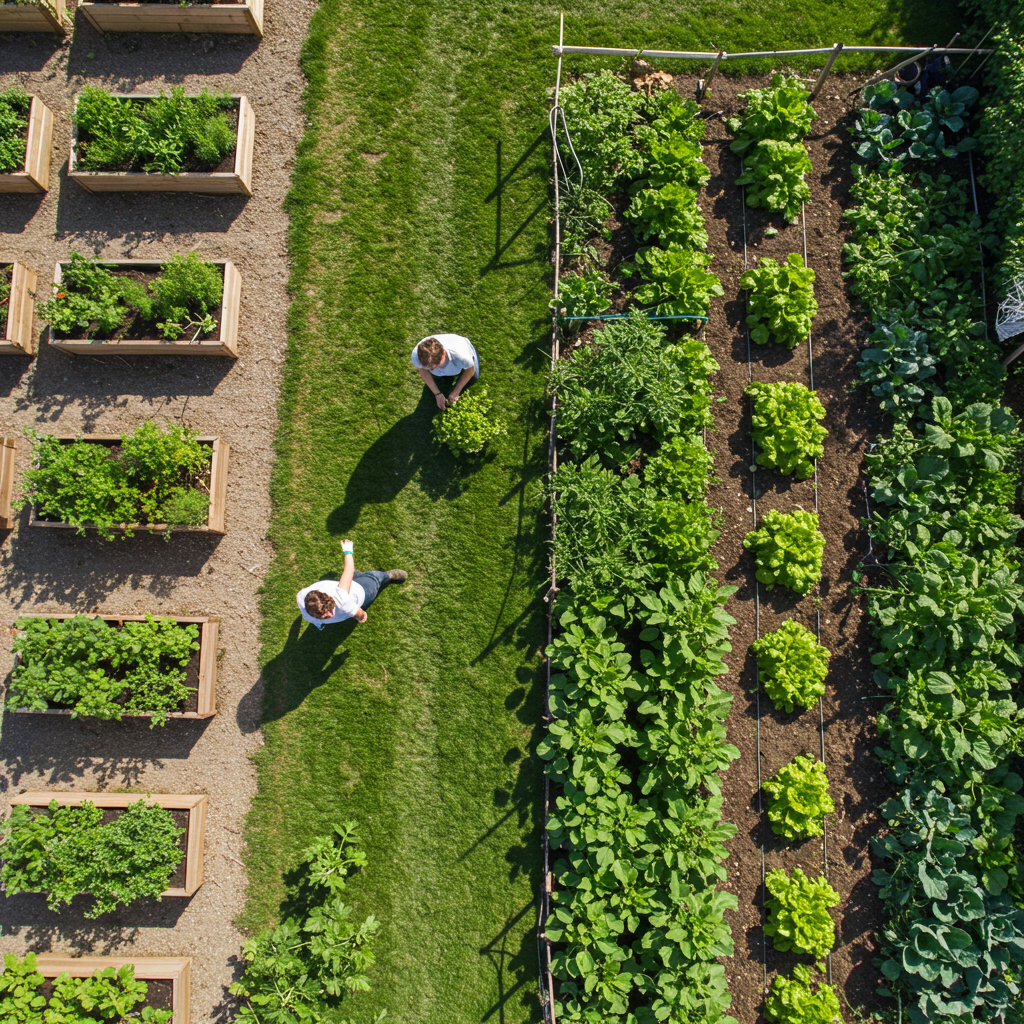Choosing the perfect foundation for your garden can feel like an overwhelming decision, especially when faced with the popular options of raised beds and traditional in-ground gardens. Both methods offer distinct advantages and disadvantages, profoundly impacting your gardening experience, plant health, and maintenance routine. From soil quality and water retention to initial costs and aesthetic appeal, understanding the nuances of each can guide you toward the ideal solution for your unique yard and gardening aspirations.
This comprehensive guide will delve into the pros and cons of raised beds and in-ground gardens, providing you with the insights needed to make an informed decision. By evaluating your specific needs, local conditions, and personal preferences, you’ll be well-equipped to cultivate a thriving garden that brings joy and bounty for years to come.
The Allure of Raised Beds
Raised garden beds, as their name suggests, are garden plots enclosed by a frame, typically made from wood, stone, metal, or composite materials, and filled with specially prepared soil. They stand above the natural ground level, creating a distinct, often elevated, growing area.
Advantages of Raised Bed Gardening
Raised beds have surged in popularity, and for good reason. They offer a multitude of benefits that can transform a challenging gardening spot into a productive oasis:
- Superior Soil Control: One of the most significant advantages is the ability to create your ideal soil mix. If your native soil is poor – too sandy, too clayey, rocky, or contaminated – raised beds allow you to bypass these issues entirely by filling them with a rich, custom blend of topsoil, compost, and other amendments. This optimized environment provides perfect drainage and nutrient availability for your plants.
- Improved Drainage: The elevated structure and well-amended soil in raised beds naturally promote excellent drainage. This prevents waterlogging, which can suffocate plant roots and lead to disease, making them ideal for areas with heavy clay soil or excessive rainfall.
- Warmer Soil, Longer Growing Season: Soil in raised beds tends to warm up faster in the spring, allowing you to plant earlier. This earlier start, combined with better drainage, can extend your growing season, giving you a head start on spring crops and a longer harvest period into the fall.
- Reduced Weeding and Pests: The confined space of a raised bed makes it easier to manage weeds. With clear boundaries and often a weed barrier at the bottom, fewer weeds sprout, and those that do are typically easier to spot and remove. The elevated nature also creates a slight barrier against certain ground-dwelling pests like slugs and snails.
- Enhanced Accessibility and Reduced Strain: For gardeners with physical limitations or those who simply prefer to avoid excessive bending and kneeling, raised beds are a game-changer. The elevated height means less stooping, making gardening more comfortable and accessible for everyone.
- Defined and Tidy Aesthetics: Raised beds inherently create a clean, organized, and aesthetically pleasing garden space. They provide clear boundaries, making your garden look more intentional and well-maintained, which can significantly enhance your yard’s overall appeal.
Disadvantages of Raised Beds
While incredibly beneficial, raised beds are not without their drawbacks:
- Higher Initial Cost: Constructing raised beds involves purchasing materials for the frame (wood, stone, etc.) and then buying a substantial amount of quality soil to fill them. This initial investment can be considerably higher than simply tilling the ground.
- Increased Watering Needs: Because the soil in raised beds drains so efficiently and is exposed to air on all sides, it tends to dry out faster than in-ground gardens. This often necessitates more frequent watering, especially during hot, dry periods.
- Material Sourcing and Construction: Depending on the size and number of beds, building them can be a significant project requiring tools, materials, and potentially some construction skills.
- Limited Depth for Certain Plants: While most vegetables thrive in raised beds, some crops with very deep taproots may prefer the unrestricted depth of an in-ground garden.
When to Choose Raised Beds
Raised beds are an excellent choice if you:
- Have poor native soil (rocky, heavy clay, contaminated).
- Struggle with drainage issues in your yard.
- Desire a longer growing season.
- Prefer less bending and kneeling while gardening.
- Are looking for a neat, organized, and aesthetically pleasing garden design.
- Want better control over soil composition and nutrients.
The Traditional Charm of In-Ground Gardens
In-ground gardens, the classic gardening method, involve cultivating plants directly in the native soil of your yard. This approach leverages the natural environment and, when managed properly, can be incredibly productive and sustainable.
Advantages of In-Ground Gardening
For many gardeners, the traditional in-ground garden remains the preferred method, offering several compelling benefits:
- Lower Initial Cost: The most significant advantage is the minimal upfront expense. Aside from basic tools, seeds, and plants, you’re primarily utilizing existing resources. There’s no need to purchase lumber, stones, or large quantities of imported soil.
- Unlimited Space and Flexibility: In-ground gardens allow for maximum flexibility in size and layout. You can expand your garden easily as your ambitions grow, accommodating large plots and plants that require extensive root systems or sprawling growth habits.
- Natural Water Retention: Native soil, especially if amended with organic matter over time, often retains moisture more effectively than the drier conditions found in raised beds. Plants can access deeper water reserves, potentially reducing the frequency of irrigation.
- Deep Root Growth: For plants that develop extensive root systems, such as corn, squash, and many fruit trees, the unrestricted depth of an in-ground garden provides ample space for roots to spread and anchor themselves firmly.
- Integrated Ecosystem: In-ground gardens connect directly with the existing soil ecosystem, benefiting from natural soil microbes, fungi, and earthworms that contribute to soil health and nutrient cycling. This can lead to a more resilient and self-sustaining garden environment.
Disadvantages of In-Ground Gardens
Despite their traditional appeal, in-ground gardens come with their own set of challenges:
- Dependent on Native Soil Quality: If your yard has poor soil (e.g., heavy clay, sandy, rocky, compacted, or nutrient-deficient), amending it to a suitable state can be a long, labor-intensive, and sometimes costly process. It often requires years of adding organic matter to achieve optimal fertility and structure.
- More Intensive Weeding: Weeds often thrive in the expansive, less defined spaces of in-ground gardens. They can blend in with cultivated plants, making identification and removal more challenging and time-consuming.
- Drainage and Compaction Issues: Areas with heavy clay soil are prone to poor drainage and compaction, leading to waterlogged roots and stunted plant growth. Conversely, very sandy soils may drain too quickly, requiring frequent watering.
- Pest and Disease Management: Ground-dwelling pests and soil-borne diseases can more easily spread throughout an in-ground garden, potentially affecting a larger portion of your crops. Crop rotation becomes crucial to manage these issues effectively.
- Physical Strain: Traditional in-ground gardening typically involves more bending, kneeling, and digging, which can be physically demanding for some individuals.
When to Choose In-Ground Gardens
In-ground gardens are an excellent choice if you:
- Are working with naturally good, fertile soil.
- Have a large area to garden and want maximum flexibility for expansion.
- Are on a tight budget for initial setup.
- Prefer a more natural, less formal garden aesthetic.
- Are growing crops that require significant root depth or spread.
- Are willing to invest time in long-term soil improvement.
Key Factors to Consider When Making Your Choice
Deciding between raised beds and in-ground gardens isn’t a one-size-fits-all answer. Your optimal choice depends heavily on several critical factors specific to your situation. Consider these points carefully:
Your Soil Quality
This is often the most significant deciding factor. If you have naturally rich, well-draining soil, an in-ground garden is a cost-effective and sustainable choice. However, if your soil is compacted clay, sandy, full of rocks, or has tested positive for contaminants, raised beds offer an immediate solution to create an ideal growing medium without years of soil amendment work.
Your Budget
In-ground gardens generally have a much lower initial cost. You’ll primarily need tools, seeds, and plants. Raised beds, conversely, require an upfront investment in materials for the frame (wood, stone, metal) and a substantial amount of quality soil to fill them. Factor in both immediate expenses and potential long-term maintenance costs.
Your Physical Ability
Gardening should be enjoyable, not a source of pain. If you have back issues, knee problems, or other physical limitations, raised beds significantly reduce the need for bending, kneeling, and heavy digging, making gardening more accessible and comfortable. For those who enjoy the physical exertion, in-ground gardening presents no such barrier.
Water Availability and Climate
Raised beds, with their excellent drainage and exposure, tend to dry out faster than in-ground gardens, especially in hot, arid climates. This means they require more frequent watering. If water conservation is a high priority or if you live in a drought-prone area, an in-ground garden or very deep raised beds might be more efficient. Conversely, in very wet climates, the superior drainage of raised beds can be a huge advantage.
Space and Layout
Consider the size and shape of your available gardening space. Raised beds excel in small, urban yards or on patios, providing a defined, compact growing area. In-ground gardens are ideal for larger plots where you desire expansive rows or wish to grow large, sprawling plants like pumpkins or corn without confinement.
Pest and Weed Pressure
Raised beds can offer a slight advantage against ground-dwelling pests like slugs and voles, as the elevated structure acts as a partial barrier. They also make weeding easier due to the contained soil volume. In-ground gardens, particularly large ones, might require more vigilant pest management and consistent weeding efforts.
Aesthetic Preferences
Do you prefer a formal, structured look for your garden? Raised beds provide clean lines and a tidy appearance. Or do you prefer a more natural, flowing landscape that blends seamlessly with your yard? In-ground gardens often offer that organic, integrated feel. Your personal style can play a role in your decision.
Local Climate and Microclimates
In colder climates, raised beds warm up faster in spring, extending the growing season. In very hot climates, however, they can also heat up more, potentially stressing plants or requiring even more water. Consider your specific regional climate and any microclimates within your yard (e.g., shady spots, windy corners).
The Hybrid Approach: Best of Both Worlds
Don’t feel limited to choosing just one method! Many gardeners successfully combine both raised beds and in-ground gardens to leverage the advantages of each. For instance, you might use raised beds for vegetables and herbs that benefit from controlled soil and easier access, while dedicating an in-ground plot for larger crops like corn or sprawling squash, or for perennial flowers and shrubs.
A hybrid approach allows you to tailor your gardening methods to specific plant needs and areas of your yard, maximizing efficiency and enjoyment.
Making Your Final Decision
Ultimately, the choice between raised beds and in-ground gardens boils down to your personal circumstances, gardening goals, and the characteristics of your specific yard. There’s no single



